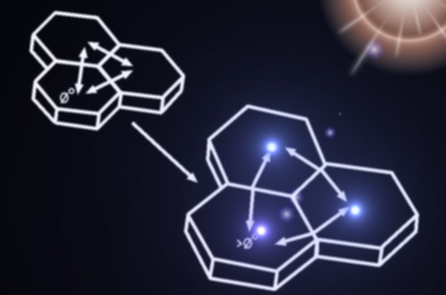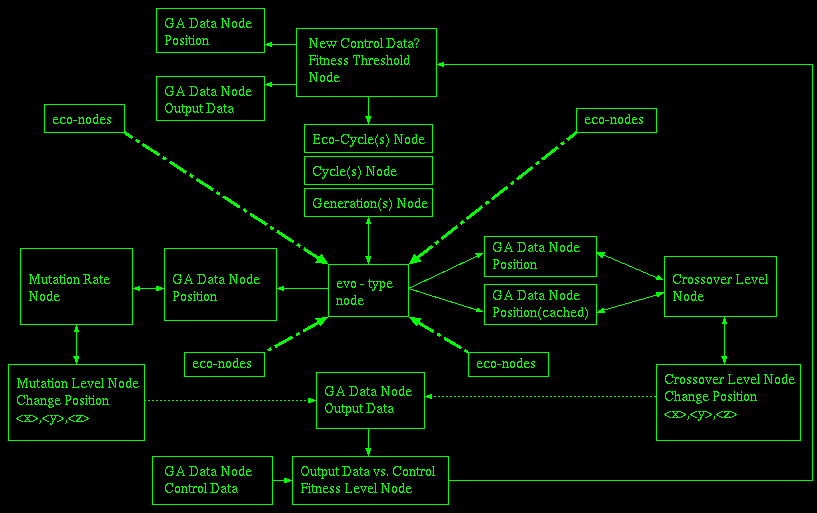
"...towards the creation of a lenseless telescope"
Experiment page
ajax sensor combinatorics with ga controls (integrating components listed below)

|
vm-cell
"...towards the creation of a lenseless telescope"
Experiment page |
|
components of vm-cell (a "virtual machine" (vm) program simulating real time cells data synthesis):
vm-cell-synthesis (ganodes synthesize cells based on control data and creates synthesis maps):
vm-cell-gen generates image and control sets for the virtual machine:
vm-cell-povgen is a set of POV-Ray scenes and include files for simulating cellular DAQ Holo 'Cubes' in 4D+for holographic selection of cells with chaos
pov-alt.geospheres also uses POV-Ray to visualize spinning spherical forms constructed using alternative geometry (ie. geodesic spheres). |
feedback through levels of abstraction |
Diagram outlining a basic synthesis process for a set of 2D "cells":
"virtual" cellular - synthesis function (.pdf file)
Diagrams for 3D cell structures:
"virtual" cellular - 3D control basics (.pdf file)
"virtual" cellular - 3D data synthesis (3D/4D+ overview) (.pdf file)
"virtual" cellular - 3D compositing (in development...) (.pdf file)
"virtual" cellular - 3D angle details (in development...) (.pdf file)
"virtual" cellular - pixel data synthesis (in development...)
4D+ Lenses:
|
|
Cellular Schematics (.pdf file)
Basic Array Hardware Architecture (.pdf file)
GA Nodes created with the Parrot language are applied to calibrate and tune the physical position and other characteristics of each CCD chip and pixel in the cellular array. The method behind this is simple. The fitness level of a CCD position set can be be based on control data in order to tune the array.
axis offset: <x coord.> <y coord.> <z coord.> from origin (0, 0, 0)
Array Fitness
NOTES on control data for ga & cellular DAQ
Macro 3D position and angle offsets of the CCD cells are just some of many tunable features. The cellular hardware tools are initially being developed as a stand-alone text-based (ncurses) program:
cell-hardware-current.tgz (menu skeleton)
GA Nodes for cell position calibration:
Cell <number>
array position <x> col <y> row <z> preset depth
rotation: <xo> <yo> <zo> from base angle (0o, 0o, 0o)
Cells are tuned to a specified degree of fitness which can be determined from control data.



Telescope3D
mailto:sthigpen@freeshell.org
http://sthigpen.freeshell.org